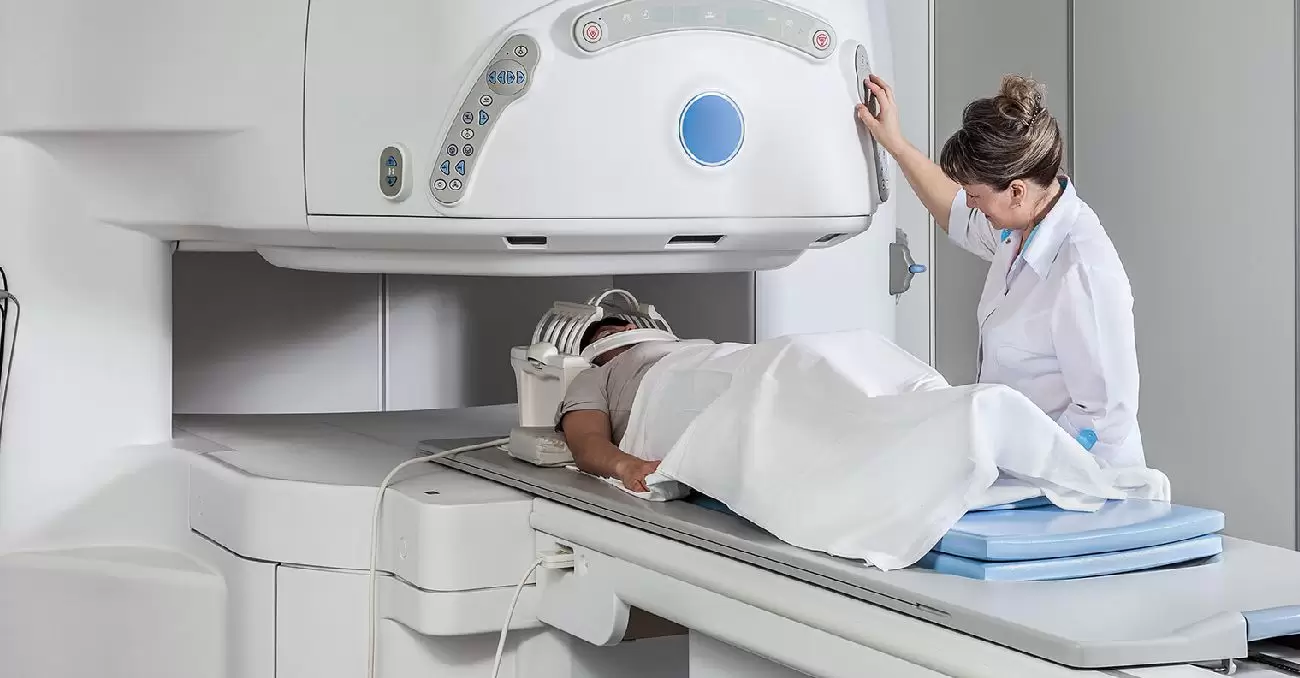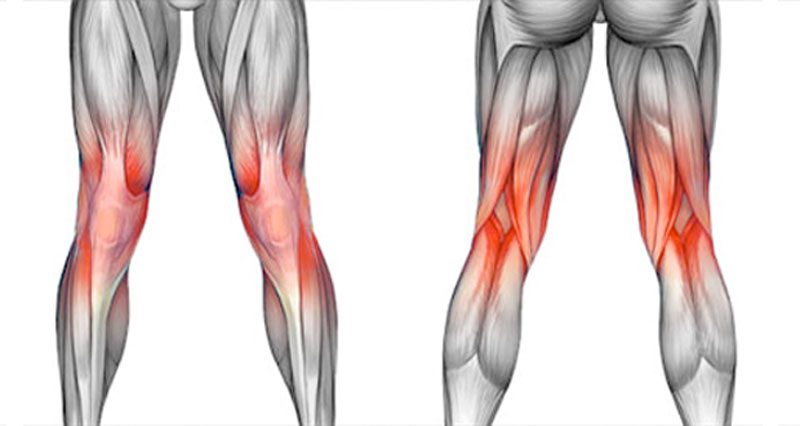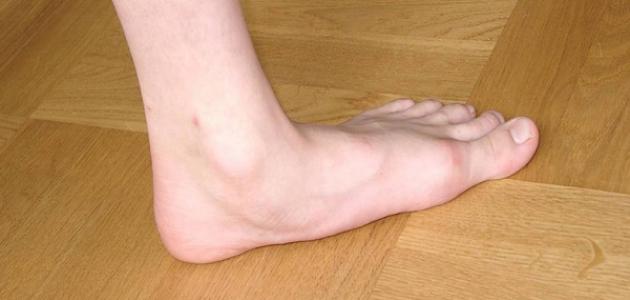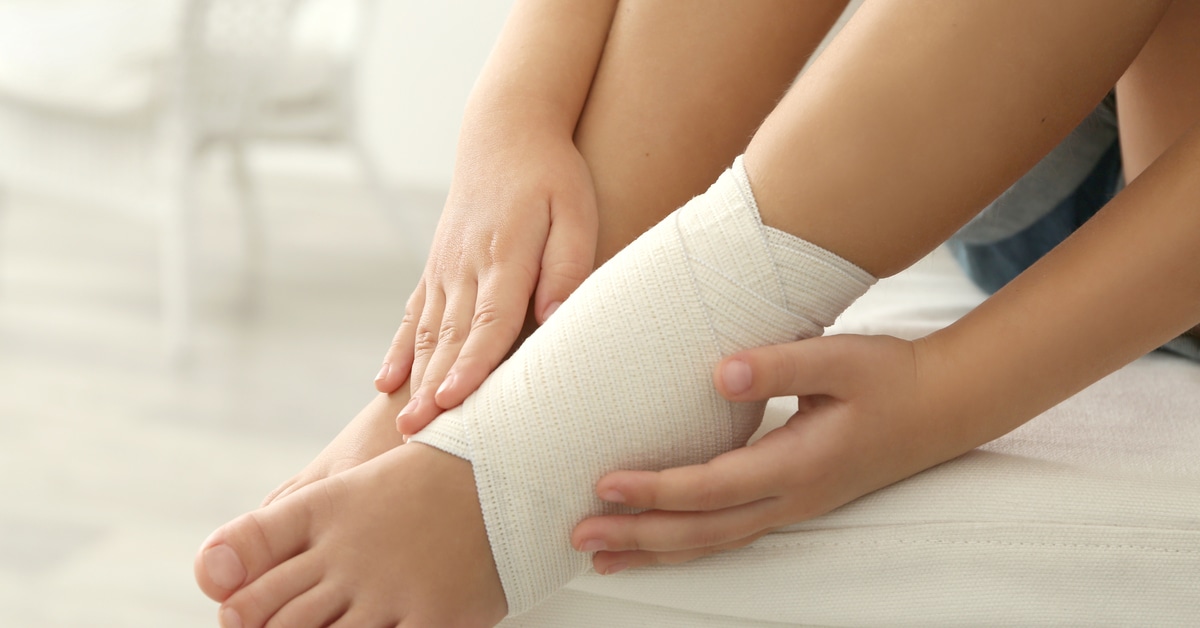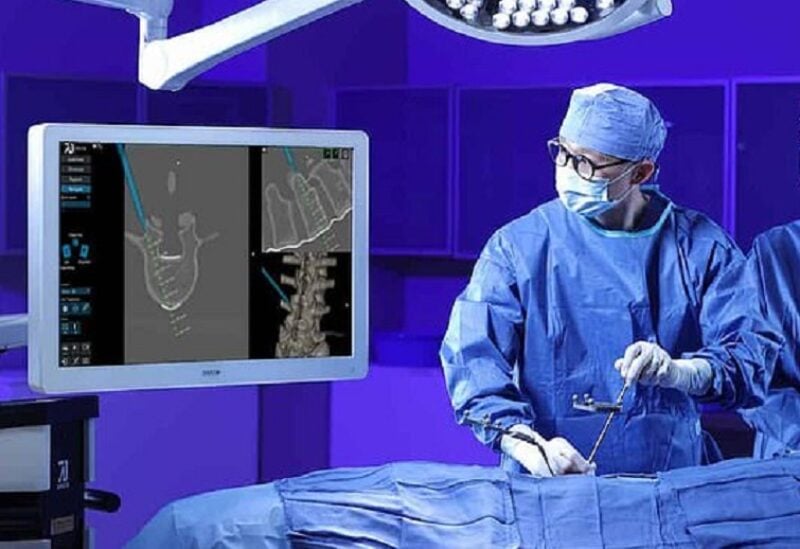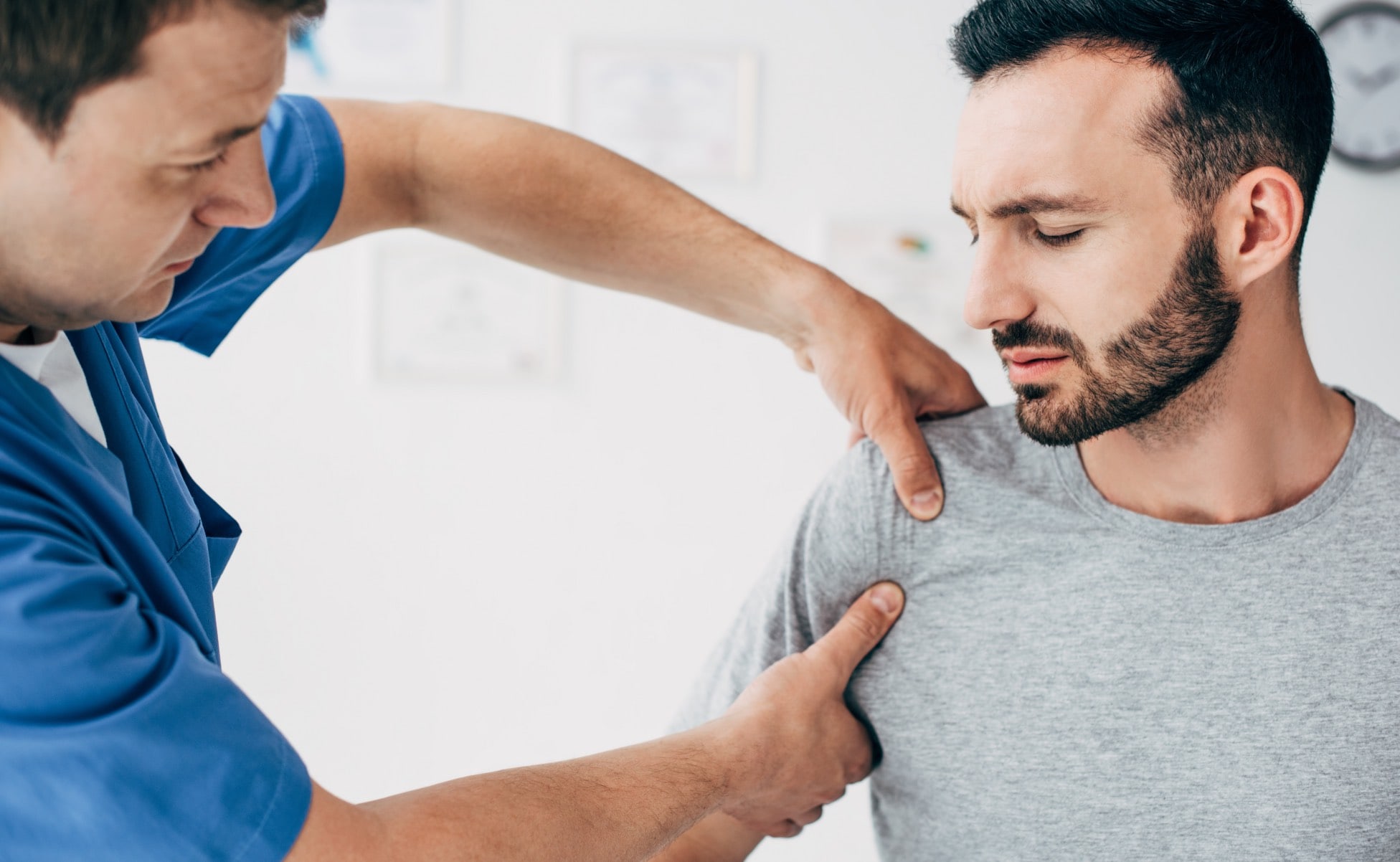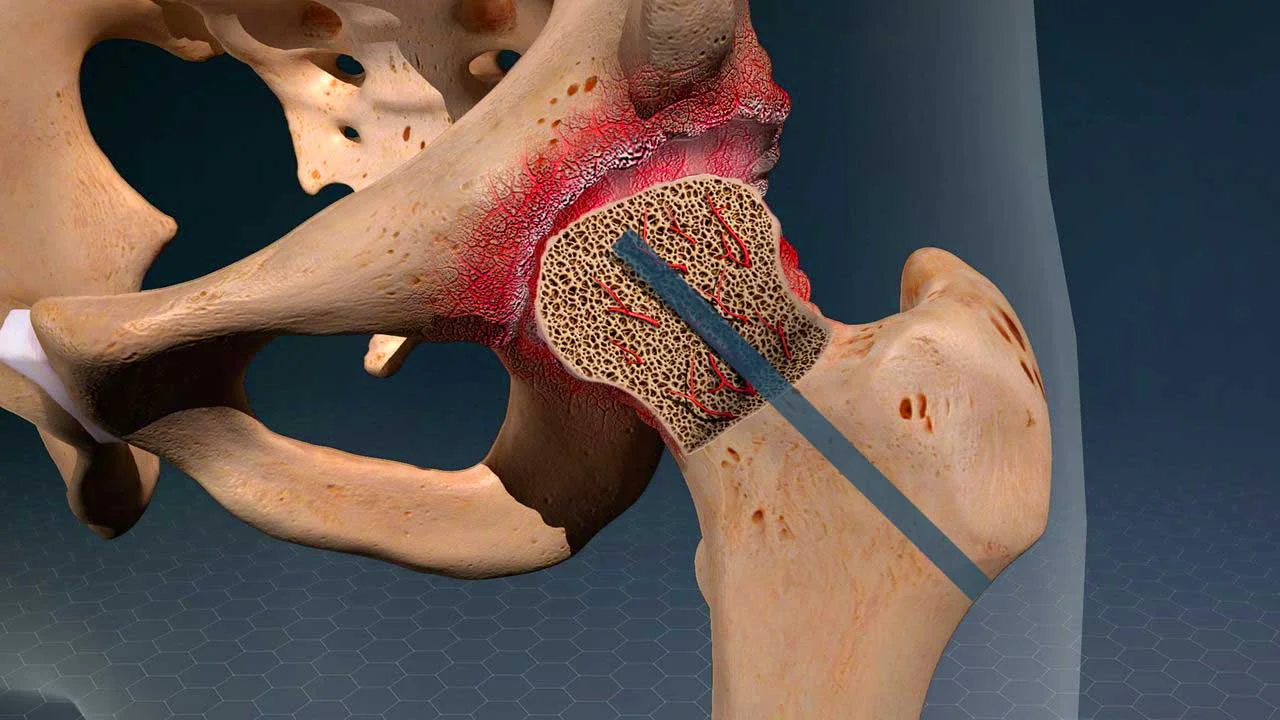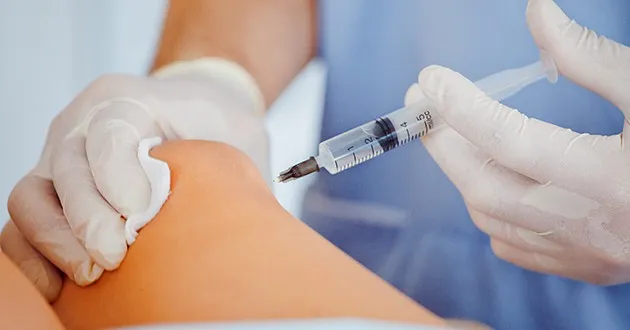What you do not know about the artificial knee joint
The process of replacing the knee joint with an artificial one is a therapeutic method that doctors resort to if all therapeutic methods are exhausted in getting rid of knee pain to no avail, and despite the ease of this operation at present, some things must be taken into account to ensure its success. Follow the following article with us to get acquainted with all the information related to this topic, so let us read the following.
Artificial knee joint
What is the knee joint?
A question that is important to know its answer clearly to understand the nature of our bodies and their components, and the main function of the knee joint is that it connects the thigh bone and the shin bone and has many characteristics such as it helps to straighten and bend the leg in addition to its ability to rotate, and there are other bones involved with the knee joint such as the bones of the lower thigh, the upper leg bone, and the patella bone, and together they form one functional unit.
These bones, which are located in the knee joint, are covered by a layer of cartilage in addition to the medial (inner) and lateral (outer) meniscal cartilage, which fills the spaces between the two surfaces of the joint, as they work to reduce the area of contact between them, and this reduces the pressure on the joint. The meniscus consists of fibrous cartilage tissue that aligns with the surface of the joint during movement.
The ligaments contribute to keeping the joint stable, the most important of which are the front and back cross ligaments, in addition to the lateral ligaments, and the lateral ligaments protect the knee when extending it, as for the cross ligaments, they protect and stabilize the knee when flexing, in addition to preventing circular movements that are outside its natural path and preventing sliding forward or backward of the joint.
Knee joint replacement
Many alternatives can help dispense with replacing the knee joint with an artificial one, some of which are non-surgical and others are surgical, and non-surgical alternatives include the following:
- Weight loss: Suffering from obesity is one of the most common reasons that lead to a significant deterioration of the joint due to the increased pressure on it, and this causes erosion in it, and for this reason, it is better for the patient to follow a diet that helps him lose weight without compromising his physical health.
- Exercising: Many types of sports work to strengthen the muscles that provide adequate support for the knee joint, and this also helps to increase the flexibility of the knee and reduce the incidence of stiffness, in addition to helping the movement of fluids in the knee in a natural way to prevent its accumulation around one of the joints. Thus, care must be taken to practice it from three to five times a week and focus on certain sports such as swimming, walking, and cycling.
- Physiotherapy: This treatment is used when the pain is so severe that it is not possible to move the foot in a normal way, and it has a major role in helping the joint return to its normal path of movement, relieving pain and reducing the swelling that may occur in the knee.
- Medication treatment: The doctor may prescribe some nutritional supplements that contain glucosamine, which stimulates the growth of new cartilage in the human body, or use steroid injections that help reduce inflammation, or use hyaluronic acid to help lubricate the joints.
As for surgical alternatives, here are some of the latest technologies that are being used recently to perform them:
- Stem cell therapy: Stem cells are extracted from the patient’s bone marrow and then injected directly into the knee area. This helps relieve pain and restore the knee’s ability to function normally.
- Platelet-rich plasma injection: through which a sample of the patient’s blood is drawn, and then the red and white blood cells and platelets are separated, after which the platelets are injected into the knee area and this helps speed up the healing process and improvement.
Knee replacement
Replacing the knee joint is a surgery in which the knee joint is replaced, whether it is all or a specific part of it, and that includes the joint and cartilage that are subject to damage with age as a result of excessive use or after exposure to a serious injury, and the knee joint is replaced with an artificial one that contains parts of metal and plastic.
Before performing a knee joint replacement, you must first make sure that the patient’s condition requires that by taking x-rays to see the stability of the joint and its ability to move. People who need a joint replacement operation are most likely between the ages of 60 to 80 years, but recently, young people and young adults have also become vulnerable to this operation, and before performing the surgery, the patient’s age, weight, and activity level are taken into account.
When does the patient need to change the knee joint?
The patient needs to perform a knee joint replacement operation when some symptoms begin to appear on him, which is an indication of the need to change the joint, and examples of signs that indicate the need to operate are:
- Feeling severe knee pain that cannot be tolerated: the pain does not stop and remains with the individual, even if he is at rest, and this begins to affect the normal functioning of his life or even the least effortful activities.
- The ineffectiveness of any other treatment: In the beginning, before nominating the surgical solution, the doctor prescribes some medications that may produce good results in some cases, but if they are not used, then in that case replacing the joint with another is the best solution.
- The curvature of the knee joint: This may occur as a result of severe inflammation in the joint that makes the individual unable to move normally and not walk in an upright position. This makes it necessary to perform this operation to maintain the patient’s health.
How many hours does knee surgery take?
The time it takes to replace the knee joint depends on the experience and competence of the specialist doctor in this type of operation, as the normal rate for the operation is from one to two hours, less or more, depending on the doctor, and the patient remains in the hospital for some time, and the doctor is the one who determines this clearly according to to the patient’s condition.
Types of the artificial knee joint
There are many types of the artificial knee joint, and the most suitable one is chosen according to the patient’s condition, and the one who determines this is the specialist doctor, and here are some of the most common types of joints:
Types according to the material used
- Metal on plastic: This type is the most common among artificial joints, and it has a metal component that connects from the bottom of the thigh bone and is installed on a plastic spacer made of polyethylene and connects from the top of the leg nerve, and among the most common metals that are used are cobalt, chromium, titanium, zirconium or nickel, which is the cheapest type and is more able to last for long periods.
- Ceramic over plastic: Ceramic is used on the hip joint instead of metal, or metal is used that is coated with ceramic and is installed on a plastic spacer, and this type of industrial joint is used with people who are allergic to nickel, which is used in metal joints.
- Ceramic on ceramic: This type of joint is made entirely of ceramic, on the side that pertains to the middle of the joint of the femur or shin bone, and although joints made of ceramic are better than others because they reduce the sensitivity of them, but they are disgraced by the issuance of a creaking sound from them while walking, or if they are subjected to severe pressure, they are exposed to fragmentation into small parts that require surgical intervention to remove them.
- Metal on metal: This type of artificial joint consists entirely of metal, but it has been discontinued in recent years for fear of metal leakage into the blood, as this is very dangerous.
Types according to stability
- Fixed-Bearing Implant: The plastic separator is attached to the top surface of the shin bone in a fixed way that does not allow it to move at all and is firmly fixed on the metal base so that the femur is sliding over this spacer, and the fixed artificial joints can provide a good range of motion that lasts for a long period, such as the bones of some patients, but frequent movement and weight gain cause damage to the fixed joint.
- Mobile-Bearing Implant: This type of joint can move in a wider range, as it gives the ability to the shin to rotate short distances around the metal base, and the doctor recommends this type of joint for young people or those who need to move more than the normal rate, and this type of joint allows the ability to move well in both the front and the side of the knee, which makes the joint able to last for longer periods and reduce the incidence of wear.
American knee joint
Patients who are forced to undergo knee joint replacement surgery need something that allows them to move in a wider range to be able to sit on the floor during praying. This made many companies, including Zimmer, manufacture a wide-moving joint that allows movement up to 155 degrees, and this is the American knee joint that some in the Gulf countries call the Islamic knee joint.
This joint makes the patient able to pray on the ground, but it is not suitable for all cases, as it is required to use it so that there is no significant damage to the knee bones and that there is no local obesity in the thigh or leg area, because this will make the knee not bend in a good way, and it is not desirable for the patient to sit on the ground for long periods after installing this joint, in addition to its lifespan being less than conventional joints.
Hinged knee
The hinged knee is used in the treatment of knee roughness and many other diseases, and it also helps in the treatment of infections, bruises, and sprains, and doctors recommend it in particular after performing a joint replacement operation during the rehabilitation period to help heal tendons, ligaments, and bones, and there are many other benefits to it, such as:
- Hinged knee works to treat posterior cruciate ligament injuries.
- It is worn after surgery.
- It is used during rehabilitation and physical therapy after joint replacement and posterior cruciate ligament surgeries.
- It is used in cases of osteoporosis to protect the knee.
- It treats knee joint sprains and ligament ruptures.
- Treatment of fractures and cracks affecting the knee joint.
- Supports and strengthens the anterior cruciate ligament.
- They are used in the event of a cruciate ligament tear.
- Some are lined from the inside and promote blood circulation, which speeds up the healing process.
- It works to stabilize the knee at specific angles to ensure that the knee does not move and accelerate the bone healing process.
- Contributes to alleviating knee pain.
- Helps treat knee roughness.
- It plays a big role in relieving pressure on the knee joint.
- It is used in the case of the elderly when they have fractures or dislocations in the knee and their condition does not allow for an operation.
- The individual can move while wearing them without feeling any pain.
What is the success rate of knee replacement surgery?
According to recent technological developments in the current era, the success rate of many operations has increased, as the means have become more advanced, as the success rate of the operation has reached 90%, but as in any other operation, there is a percentage of risk, even if it was small, due to the doctor’s lack of experience or exposure to any side effects after the operation.
What is the lifespan of the knee joint?
The life span of the knee joint varies from one patient to another according to what doctors say about this subject, but the normal rate is that it is necessary to change the joint in the knee from 10 to 15 years, and the hip joint takes from 15 to 20 years.
Does the artificial joint break?
The knee joint may be subject to fracture after the operation as one of the side effects that individuals may be exposed to, as the occurrence of some types of fractures to the parts of the artificial joint necessitates a surgical intervention to replace it with another artificial joint.
Is there an alternative to knee replacement surgery?
Many alternatives may be resorted to instead of a knee joint replacement operation, and the specialist doctor determines the most appropriate method for treating the patient that yields effective results, and some of these alternatives may be non-surgical and others surgical.
Types of the artificial knee joint
Islamic knee joint (with full flexion – wide movement)
This joint is a preferred choice among people who want to have greater freedom to move the knee on a wider scale because they want to sit on the ground after the process of changing the joint to perform duties and prayers, and there are some companies such as Zimmer Company, which specializes in the manufacture of industrial joints, and manufactures joints that can be moved up to an angle of 155 degrees and is called the American joint.
In the Arab Gulf countries, it is called the Islamic joint because it allows its owners to pray on the ground after its installation, but this type of joint is not suitable for all individuals, as it is required for its installation that there be no significant damage to the knee bones and not to suffer from local obesity in the thigh and leg, because this will hinder the knee from flexing, and the life of this joint is less than other traditional joints, and it is advised not to exaggerate sitting on the ground when installing it.
Smart artificial knee joints
When an artificial joint is installed in the knee area, the surface of the femur and tibia are first formed so that they are compatible with the shape of the artificial joint, after that some metal surfaces are installed to cover the surfaces of the femur and tibia like a natural joint, some of the different plastic parts that are placed between the surfaces of the two bones are tried to determine a suitable thickness for that part so that the ligaments are sufficiently taut without causing slack or to the point of impeding the movement of the joint.
That step in which the appropriate thickness of the plastic part is determined and the extent of the degree of tension of the ligaments in the inner and outer part of the joint requires a surgeon with great experience in these operations to perform it correctly, and to avoid this from happening, some smart industrial parts were invented instead of the traditional ones to help them complete that step without any problems.
In the smart plastic parts that are manufactured, there are some sensors to work to determine the amount of pressure that falls on different parts of the joint surface, in addition to that it contains a battery and a transmitter that transmits information in the operating room to a computer, and thus it is easy for the inexperienced doctor to determine the appropriate thickness of the plastic piece that will be installed for the patient and to determine the equal tension of the ligaments on the inner and outer side of the joint.
Reasons for changing the knee joint
Many reasons lead to the need to replace the knee joint, for example:
- Osteoarthritis and knee roughness: This is the most important and common reason that requires a knee joint replacement, as knee roughness greatly affects the cartilage that is present in the joint and becomes less able to absorb shocks.
- Unbearable pain in the knee: This pain can be in the inner or outer part or behind the kneecap, and the pain may be in the beginning period that appears from time to time, and with time it does not fade and intensifies during the night periods in particular.
- Stiffness and stiffness of the joint: This is more in the morning periods and begins to continue for a longer time with the patient until it completely hinders him from continuing his life normally, and this causes him severe discomfort.
- Difficulties in walking: the erosion that occurs in the knee area when it becomes advanced begins to affect the individual’s ability to walk and he feels severe pain in the entire lower limb, and with time he will need a crutch because he is unable to put pressure on the knee joint well.
- Some other reasons: There may be some other reasons that require a knee replacement operation, such as obesity, advanced age, suffering from a bow in the knee, exposure to some fractures, birth defects, or rheumatoid arthritis.
In addition to these reasons, there are some other symptoms that, as soon as they appear, require a knee joint replacement operation, such as:
- Corrosion in the cartilage, knee, or joint.
- Feeling unbearable pain that does not decrease in intensity even in times of rest.
- Knee joint stiffness and inability to move it.
- Facing great difficulty in doing the simplest daily activities, including walking.
- Difficulty moving around and the joint losing its ability to perform its function over time.
After knee replacement surgery
After the knee joint operation, the patient must be careful to listen to the doctor’s instructions well and avoid any matters that he is forbidden to do so that he does not have any serious complications, and here are some things that you must adhere to:
- When sleeping: After performing the knee joint replacement operation, the patient may be able to sleep in any comfortable position for him, whether it is on the stomach, back, or side, but the bed should be high so that he can get up from it easily, and during the first days of the operation, the heel is placed on a pillow and avoided placing it under the knee. Care must also be taken to apply ice packs on the wound area to reduce its congestion and calm the swelling.
- Medicines: The doctor prescribes some pain relievers that have a strong effect at moderate intervals and a specific time for each of them, and after several days of the operation they are not taken unless they feel pain only, in addition to that the patient takes some antibiotics intravenously until two days after the operation to prevent any infection in the wound, in addition to medicines that prevent blood clots.
- When walking: Within a few days of the operation or even weeks, a crutch may be used to achieve balance and avoid falling, and it is dispensed with when strengthening the thigh muscles, and the house must be cleared of any things that may lead to tripping, such as wires and folds of carpets, while following some instructions to avoid falling, and one must persevere in walking for half an hour every day.
- Stairs: when climbing the stairs, it is preferable to start by lifting the healthy leg first, and when descending, we start with the leg in which the surgery was performed, and while descending or ascending, use the bars or crutches.
- Other instructions: It is better not to shower two days before the operation, in addition to being careful to avoid weight gain, after surgery it is possible to do some light exercises such as swimming and walking.
Rehabilitation of the knee joint
The rehabilitation program that is followed after performing a knee joint replacement operation is very important and cannot be dispensed with in any way at all, as it is a set of exercises recommended by the doctor under the supervision of a physiotherapist, and has a major role in accelerating the healing process and restoring the joint to its strength and effectiveness.
When does walking start after installing the knee joint?
The surgeon should be the one who determines when to start walking after the process of installing the new joint, but this may be possible to happen on the first day of the operation or during the day after it, but that is by relying on a crutch or on one of the companions, and this is according to the extent of the weight that the joint can bear.
When walking, the movement must be slow and very careful, and this lasts for a period of 20 to 30 minutes, and this has many benefits as it helps to enhance blood circulation and restore muscles to their strength again, with the need to know that the patient will not be able to do all the movements he used to do in the past at once and the need to slow down and not rush until he recovers properly.
How long does an artificial joint last?
This is relative and the time is not the same in all cases, and it is known that the validity of the artificial joint is continuous from 15 to 20 years, after which another surgery must be performed to install a new artificial joint.
Symptoms after changing the knee joint?
One of the symptoms that the patient feels after undergoing a knee joint replacement operation is the feeling of pain and the appearance of slight swelling, and this matter is normal and does not cause concern at all because this operation is somewhat complicated and this must happen, and for that, the doctor prescribes some painkillers such as anti-inflammatory steroids or topical creams, and the pain intensity begins to decrease gradually until it completely disappears within two months of the operation.
Knee exercises after arthroplasty
Post-knee joint replacement exercises are very important to strengthen the muscles that surround the knee joint and help it quickly restore its flexibility and be able to perform its task optimally, and many exercises are recommended by the doctor, including:
- Move the palms of the legs and ankles to improve blood flow: at first, relax on the back or sit on the bed, keep the legs in a straight position, and move the ankles forward and backward. This exercise is performed every 20 minutes, and during its practice, you must feel the tension in the muscles of the twins and posterior hips.
- Indirect stretching of the quadriceps muscle: work on lying on the back and keep the toes in a straight position with their pointing upwards, then tighten the muscle by pulling the knee downward, then continue the tension for up to 5 seconds and repeat this exercise up to 10 times.
- Effective strengthening of the quadriceps muscle: while sitting on the bed, place a rolled towel under the knee, then lift the man’s palm from the bed by stretching the quadriceps muscle and using the bed sheet to raise the foot, keep the foot in the air for 5 seconds and then lower it very slowly and repeat This exercise up to 10 times.
- Exercise to improve knee bending while lying down: Lie on the bed and keep the legs upright, then bend the knee very slowly by pulling the leg towards you and the bed cover can be used during that, and return the knee to its normal position very slowly and repeat this exercise up to 10 times.
- Raise the leg upright: To do this exercise, lie on the bed and keep the legs straight, then tighten the quadriceps muscle and keep the foot in its straight position, then raise the leg between 20 to 30 cm and keep this position up to 5 seconds and repeat Exercise up to 10 times.
- Folding the leg in a standing state: Stand up and lean on a chair, then bend the knee by raising the heel in the air, then return the heel to the ground and maintain an upright position, keep this situation up to 10 seconds, and repeat this exercise 5 times.
- Get up from a sitting position: You must sit on a chair with your hands for this exercise, and then keep the palms of the legs in a straight position on the ground and get up from the chair and take a standing position. This exercise is repeated up to 10 times.
- Climbing the stairs: Stand at the bottom of the stairs and hold the bars, then go up the stairs and then go down and repeat this exercise 10 times.
Physiotherapy after knee joint replacement surgery
Physiotherapy after knee joint replacement surgery is very important to be able to recover one’s health again, and some people have a misconception about the danger of exercising after the operation or even walking, but this is not correct at all, as the individual must move to be able to adapt to the new knee.
The stretching and flexion device that works slowly and is gradually increased is used to improve the flexibility of the joints.
Foot and ankle exercises
These exercises are done gradually through the following method:
- Extend the leg, making sure to press the knee down.
- Work on raising the foot from the supine position.
- Pull the heel up toward the body.
- Full leg extension and flexion exercises up to 90 degrees
This exercise includes doing the following steps:
- Maintain full extension of the knee area.
- Lift the pelvis up.
- Pull your thighs in and out using a foam ball and rubber bands.
- Stand on a balance board.
- Use a stationary bike.
- Lift the foot straight with a slight weight upward at the end of the foot.
- Use a quad muscle strengthening machine.
- Extend the leg from the stomach-lying position.
- Use the ladder for knee flexion.
- Sit partially with your back against a wall.
- Use a one-legged stand.
Defects of the artificial knee joint
In addition to the fact that the process of replacing the knee joint with an artificial one is a good thing and helps to get rid of many problems, some defects may bother many individuals, such as:
- An artificial knee joint cannot be as efficient as a natural knee joint.
- Inability to bend the knee as usual, and it has a specific angle of no more than it.
- Movement becomes severely limited as individuals are not able to perform movements that require weight on the knee area such as kneeling.
- The knee makes a crackling sound when moving.
- the patient can have numbness in the outer edges of the knee, and it may disappear within two years of its installation, but the patient does not return to the same as before at all.
- The installed knee joint may be subject to erosion, which requires another operation to change it, especially if the patient is less than 60 years old.
The life span of the artificial knee joint
The life span of the artificial knee joint varies from one person to another according to the statements made by the doctors, but it is known that the validity of the artificial knee joint lasts from 10 to 15 years, and the hip joint may take time from 15 to 20 years, and after the end of that period, another surgery is performed to change the joint.
Knee replacement surgery damage
The pain that the patient felt before the operation may continue, in addition to the occurrence of clots in the lungs and legs, and it may also be possible for the patient to transmit infection in the wound, or loosening and erosion may occur in the prosthesis, and here it is necessary to go through operations again to change it immediately, and some serious complications may occur after the operation, including:
- Picking up an infection in the wound.
- Pink blood clots can start in the legs and then extend to the lungs.
- Knee stiffness.
- Wear a plastic knee pad for a non-short period.
- The shape of the knee has changed, so it does not become the same as it was before.
- The feet become unequal in length.
- The patella moves out of place.
- Limping while walking and not being able to walk normally.
- Suffering from high blood sugar.
- Exposure to bleeding.





